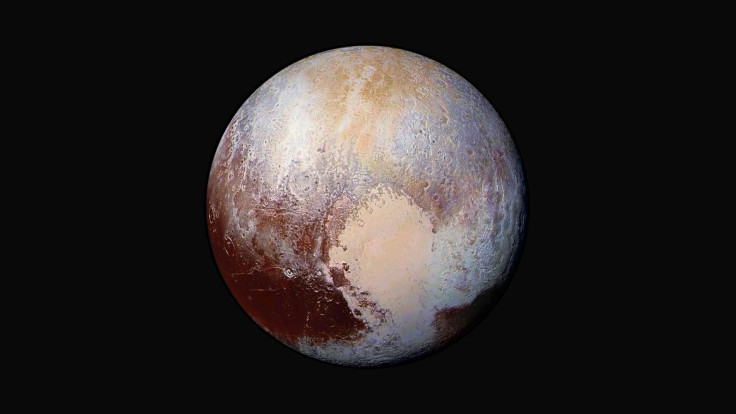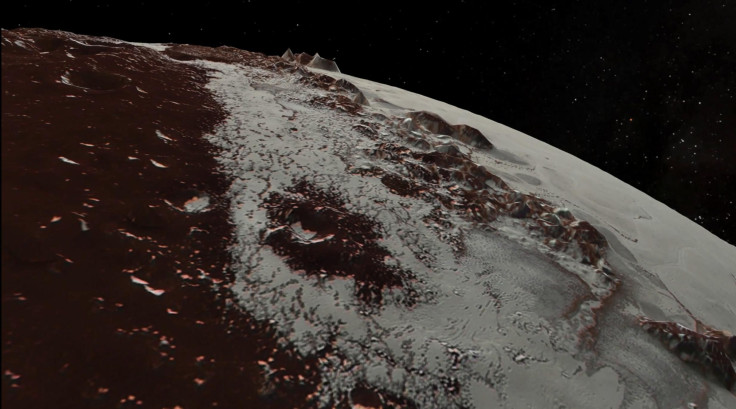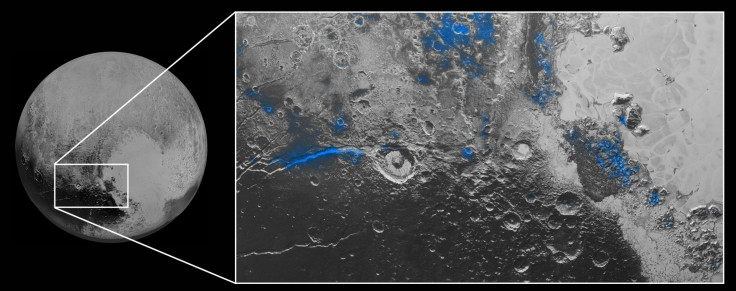NASA Pluto Photos: 5 Gorgeous Images Of The Dwarf Planet

Pluto may have been downgraded from a planet to a dwarf planet, but it hasn’t lost any of the many features that make it special. NASA’s New Horizons spacecraft has given us better views of Pluto than ever before, bringing its atmosphere and surface close to us even though it is really more than 4.5 billion miles away.
Heart
New Horizons got the whole picture during a flyby of Pluto, and seeing the entire world in one frame shows this miniature planet’s got a lot of heart. One of the most prominent features on Pluto is Tombaugh Regio, a heart-shaped area that covers a large portion of the southern hemisphere and creeps north. The western half of that heart is a frozen expanse called Sputnik Planitia.
Air

NASA used data from the dwarf planet and its atmosphere to create this image that shows the layer of haze surrounding Pluto. Scientists recently suggested that the particles in this haze, rather than the gases in its atmosphere, largely control the temperature there. The haze particles eat up the heat that comes to them from space and then emit that energy back outward, the researchers say, and that’s why Pluto has been measured to be so much colder than the experts had estimated. While projections had put the dwarf planet at about -280 degrees Fahrenheit, based on the atmosphere’s gas composition, New Horizons measured it as -333 degrees.
Fire

Pluto’s terrain includes a large swath with what NASA has described as “giant knife blades” jutting into the air — ice skyscrapers, if you will. These pointy projections, which are hundreds of feet tall, are formed when extreme swings in temperature on Pluto sublimate the methane ice that built up — sending it directly from the solid phase of matter to gas, completely skipping the melty liquid phase. The wild climate change erodes the ice in a way that leaves “dramatic crests and sharp divides,” the space agency has said.
Earth

Although Pluto is a small, cold world at the edge of the solar system, it has a lot of variety in its terrain. There are mountain ranges, spaces pocked with craters and giant spikes of ice. Pluto also has varying color throughout its surface.
Water

New Horizons has discovered areas of water ice on Pluto. They can be seen most to the west of the prominent heart-shaped feature on its surface called Tombaugh Regio, near the Elliot crater and in a stretch called Viking Terra.
“Large expanses of Pluto don’t show exposed water ice… because it’s apparently masked by other, more volatile ices across most of the planet,” researcher Jason Cook said in a NASA statement. “Understanding why water appears exactly where it does, and not in other places, is a challenge that we are digging into.”
The water ice is also masked by the reddish color we see in Pluto’s photographs.
“I’m surprised that this water ice is so red,” another researcher, Silvia Protopapa, said. “We don’t yet understand the relationship between water ice and the reddish tholin colorants on Pluto’s surface.”
© Copyright IBTimes 2024. All rights reserved.











